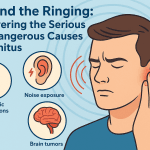This article is for informational purposes only and should not be considered medical advice. Always consult a healthcare professional for dietary recommendations.
Understanding Heart Health
Heart disease remains one of the leading causes of death globally, making it essential to prioritize heart health. What we eat plays a critical role in maintaining a healthy heart. By incorporating specific foods into our diets, we can significantly reduce our risk of cardiovascular diseases. But how exactly does our diet impact heart health? The answer lies in the complex interplay of nutrients and their effects on our body’s systems.
Top Foods for Heart Health
In this article, we will explore some of the best foods that promote heart health, along with practical tips on how to include them in your daily meals. This isn’t just about avoiding unhealthy foods; it’s also about embracing those that nourish your heart.
1. Fatty Fish
Fatty fish, such as salmon, mackerel, and sardines, are rich in omega-3 fatty acids. These healthy fats are known to lower blood pressure, reduce triglycerides, and decrease the risk of arrhythmias. According to the American Heart Association, consuming omega-3 fatty acids can also help reduce inflammation in the body, a key factor in heart disease (American Heart Association, 2021). Omega-3s work by altering the way our body processes fats and can even improve endothelial function, which is crucial for maintaining healthy blood vessels. Aim to consume fatty fish at least twice a week.
How to Incorporate Fatty Fish
- Grill or bake salmon with herbs and lemon for a delicious dinner.
- Add canned sardines to salads or whole-grain toast for a quick lunch.
2. Leafy Greens
Leafy greens like spinach, kale, and Swiss chard are packed with vitamins, minerals, and antioxidants. They are also high in dietary nitrates, which can help lower blood pressure. Regular consumption of leafy greens is linked to a reduced risk of heart disease. A study published in the Journal of Nutrition found that higher intake of leafy greens was associated with lower rates of cardiovascular events (PubMed, 2020). These greens can enhance vasodilation, the widening of blood vessels, which improves blood flow and reduces strain on the heart.
How to Enjoy Leafy Greens
- Blend spinach into smoothies for a nutrient boost.
- Create a colorful salad with mixed greens, cherry tomatoes, and a vinaigrette dressing.
3. Berries
Berries, such as blueberries, strawberries, and raspberries, are rich in antioxidants called flavonoids. These compounds have been shown to reduce blood pressure and inflammation, contributing to better heart health. Research indicates that regular berry consumption is linked to improved cardiovascular health outcomes (NHS, 2022). The antioxidants in berries may help combat oxidative stress, which is a contributor to heart disease. Incorporating a variety of berries can maximize these benefits.
Incorporating Berries into Your Diet
- Top your morning oatmeal with fresh berries.
- Snack on a handful of mixed berries instead of sugary treats.
4. Nuts and Seeds
Nuts and seeds, including almonds, walnuts, and chia seeds, are excellent sources of healthy fats, fiber, and protein. They can help lower cholesterol levels and reduce the risk of heart disease. Just a small handful a day can make a difference. The Mediterranean diet, which emphasizes nuts and seeds, has been associated with a lower risk of heart disease (WHO, 2021). Nuts contain plant sterols, which can help block cholesterol absorption in the intestines.
Easy Ways to Add Nuts and Seeds
- Sprinkle chia seeds on yogurt or smoothies.
- Enjoy a handful of mixed nuts as a satisfying snack.
5. Whole Grains
Whole grains like oats, quinoa, and brown rice are high in fiber, which helps lower cholesterol levels and provides essential nutrients. Replacing refined grains with whole grains can significantly improve heart health. A study in the American Journal of Clinical Nutrition found that whole grain intake is inversely associated with cardiovascular disease risk (UpToDate, 2023). Whole grains also promote a healthy gut microbiome, which has been linked to improved heart health through various mechanisms, including reduced inflammation.
How to Switch to Whole Grains
- Start your day with a bowl of oatmeal topped with fruits and nuts.
- Use brown rice instead of white rice in your meals.
6. Avocados
Avocados are rich in monounsaturated fats, which can help lower bad cholesterol levels. They also contain potassium, which helps regulate blood pressure. Adding avocados to your diet can be both delicious and beneficial for heart health. A recent study found that avocado consumption is linked to improved heart health markers (CDC, 2022). The fiber and healthy fats in avocados can also enhance satiety, helping with weight management.
Ways to Include Avocados
- Spread avocado on whole-grain toast.
- Add diced avocado to salads or salsas.
7. Beans and Legumes
Beans and legumes, such as lentils, black beans, and chickpeas, are excellent sources of protein and fiber. They can help lower cholesterol and improve heart health. Incorporating beans into your diet can also promote satiety, aiding in weight management. A study published in the Journal of the American Heart Association highlighted the benefits of legumes for heart health (American Heart Association, 2021). The soluble fiber in beans can help to lower LDL cholesterol levels, further protecting heart health.
Simple Ways to Add Beans and Legumes
- Prepare a hearty bean soup or chili.
- Add chickpeas to salads or blend them into hummus.
Myth vs. Fact
Myth: All fats are bad for heart health.
Fact: Healthy fats, such as those found in avocados, nuts, and fatty fish, are essential for heart health. They play a crucial role in reducing inflammation and improving cholesterol levels.
Myth: You can’t enjoy tasty food while eating healthy.
Fact: Many heart-healthy foods are delicious and versatile, allowing for a variety of flavors and dishes. Experimenting with herbs and spices can enhance the taste of healthy meals.
Real-Life Example
Consider Sarah, a 45-year-old woman who was recently diagnosed with high cholesterol. After consulting with her healthcare provider, she decided to revamp her diet. By incorporating more fatty fish, leafy greens, and nuts into her meals, she not only enjoyed her food but also saw her cholesterol levels improve within a few months. Sarah’s journey highlights how dietary changes can lead to significant health benefits.
Frequently Asked Questions
What are the best foods for heart health?
The best foods for heart health include fatty fish, leafy greens, berries, nuts, whole grains, avocados, and beans.
How often should I eat fatty fish?
It is recommended to eat fatty fish at least twice a week for optimal heart health benefits.
Can I eat nuts every day?
Yes, a small handful of nuts each day can provide heart health benefits without adding excessive calories.
Are there any foods I should avoid for heart health?
Limit saturated fats, trans fats, and high-sugar foods, as they can negatively impact heart health.
What role do whole grains play in heart health?
Whole grains are high in fiber and nutrients, which can help lower cholesterol and reduce the risk of heart disease.
Is it possible to eat delicious food and be heart-healthy?
Absolutely! Many heart-healthy foods are flavorful and can be enjoyed in a variety of dishes. It’s all about choosing the right ingredients and preparing them in tasty ways.
Key Takeaways
- Incorporate fatty fish into your diet at least twice a week.
- Include a variety of leafy greens and colorful fruits in your meals.
- Choose nuts and seeds as healthy snacks or meal additions.
- Opt for whole grains instead of refined grains for better heart health.
- Enjoy avocados and legumes for their heart-healthy fats and fiber.
References
- American Heart Association. (2021). Heart-Healthy Eating.
- Centers for Disease Control and Prevention (CDC). (2022). Heart Disease Facts.
- World Health Organization (WHO). (2021). Healthy Diet.
- PubMed. (2020). Omega-3 Fatty Acids and Cardiovascular Disease.
- NHS. (2022). Heart Health: Foods to Eat and Avoid.
- UpToDate. (2023). Dietary Approaches to Prevent Cardiovascular Disease.








Post a comment